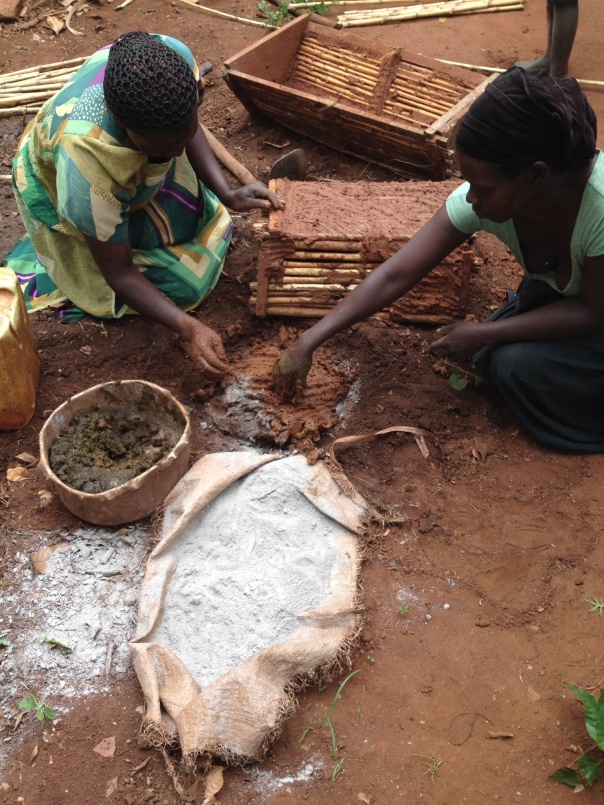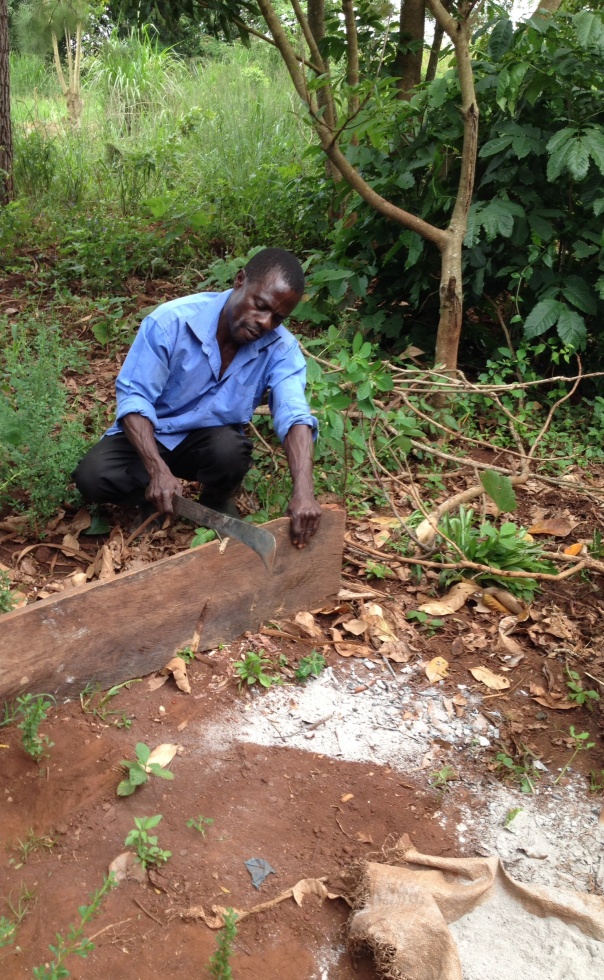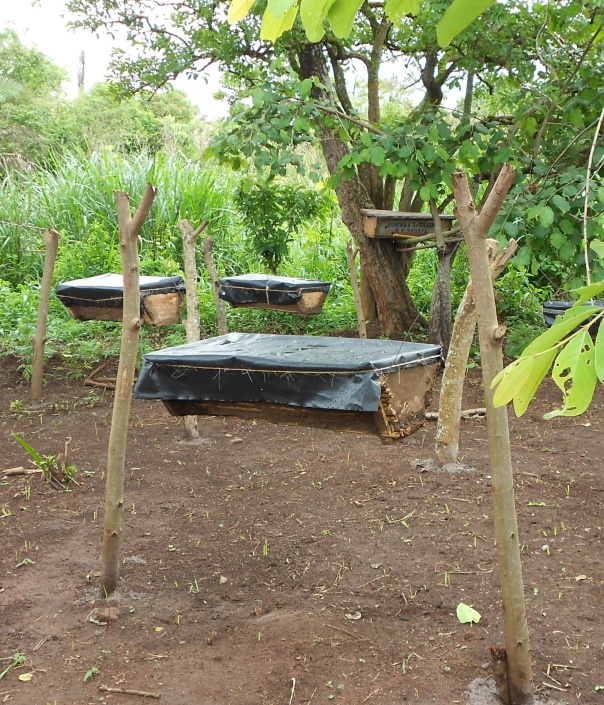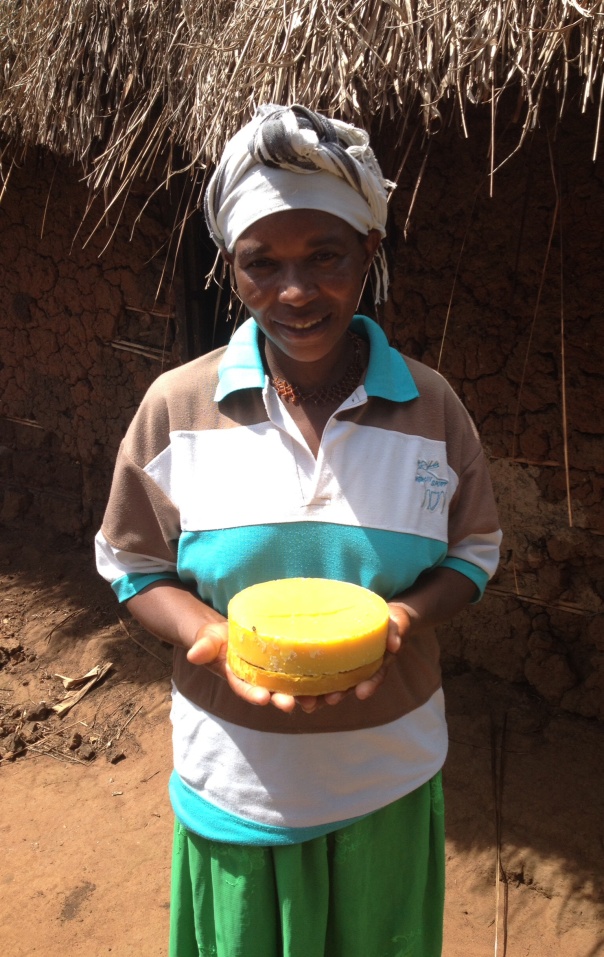Tag Archives: sustainable rural development
Not all types of bee hive are productive.
In many parts of Africa there is a history of honey hunting particularly in areas having a low population density and an abundance of natural bee flora. Traditional honey hunting has largely been replaced by beekeeping. Indeed, many parts of rural Africa have strong beekeeping traditions which play an important role in the rural economy. Despite such a tradition, there has been a considerable decline in traditional beekeeping in many parts of Africa, including Uganda. Proposed reasons for this decline include the intensification of agriculture which is commonly associated with degradation of bee forage and over-use of pesticides. It is worth mentioning that many people in Uganda, and also other areas of tropical and sub-tropical regions of Africa, are experimenting with a wide range of beekeeping methods, from traditional to modern. The important point to note here is that some of these methods have been successful, others not. Of the apiaries that I have visited in the rural villages of western Uganda many use traditional log hives. Generally speaking these work well.
Traditional log hive — in use.
Similarly, the introduction of more modern hives such as the Kenya top-bar hive (KTBH) also work well but require some initial training in their construction and use.
Kenya top-bar hives — in use.
Where new methods fail it is usually because the technology is inappropriate to the particular area, e.g. the use of Langstroth hives in remote areas of Uganda. Although these types of moveable-frame hive are used with considerable success in temperate climates, and in cooler parts of Africa, overall they have met with limited success in Africa. The aggressive nature of the African bees is not suited to the techniques for managing such hives which are expensive and intricate and must be built with precision. Expensive equipment is also required to extract the honey. Furthermore, unlike the KTBH, these hives cannot easily be suspended high enough off the ground to be safe from invasion by ants and termites, and they are also vulnerable to colonisation by wax moths whenever the bees abscond. Despite such limitations, Langstroth hives are frequently supplied by larger donor organisations and governments without any appropriate training or technical support and can often be found abandoned, often never colonised.
Value-added products: making the most of beeswax.
Beeswax is often wasted by beekeepers. It is however a valuable commodity whether it be for baiting bee hives or for making a variety of products such as candles, polishes and cosmetics. In 2012, during my first visit to Uganda, the group leaders received training in the harvesting and processing of beeswax. We saw the fruits of this training on a visit (29 April) to the homestead of one of the group leaders.
One of the group members proudly showing her sample of candles, some using sections of bamboo.
Another group member with some nice blocks of good quality beeswax.
How to harvest beeswax:

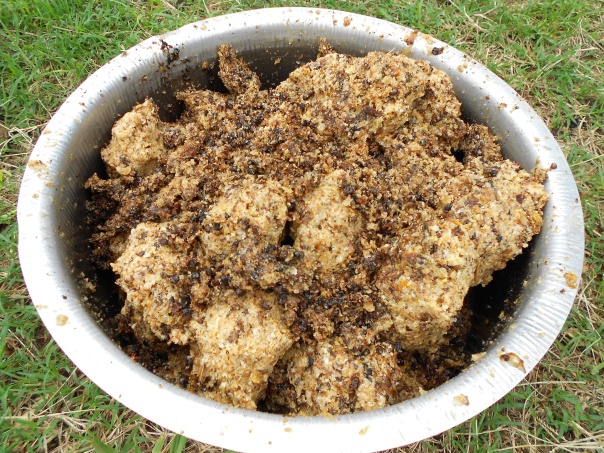




Visiting the apiaries of group members, 28 April.
One of the aims of this trip was to visit the apiaries of individual members rather than group leaders to try and get a better understanding of what is actually going on at grass-roots level with the project. [Further details on this and other posts, together with other activities carried out on the trip but not mentioned in this blog, can be found in Roy Dyche’s full trip report which should be available on the BA website in June.]




